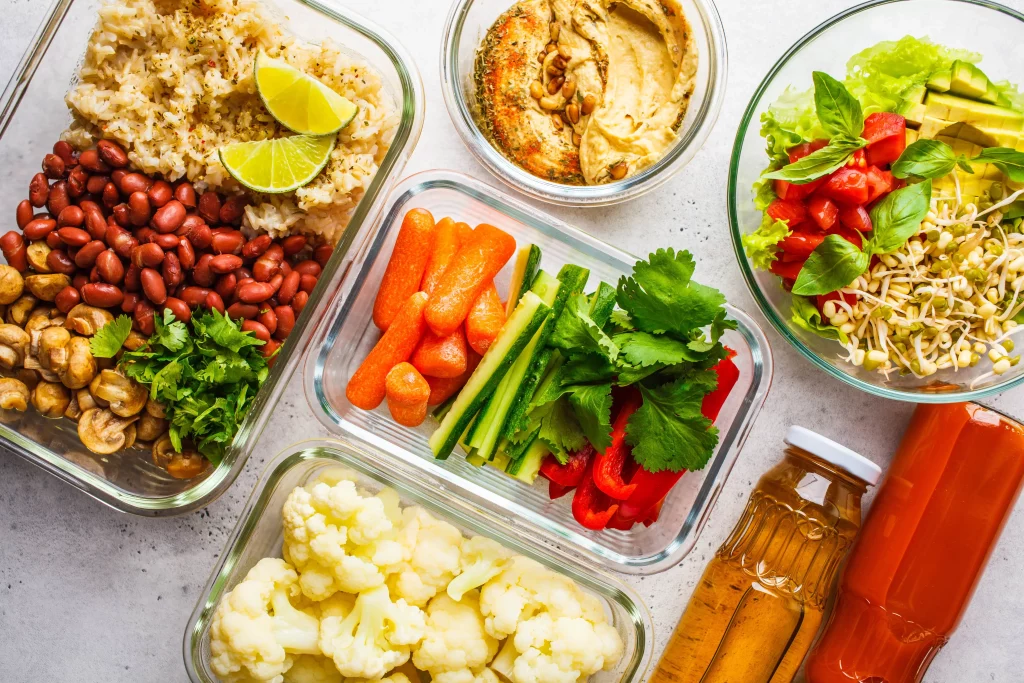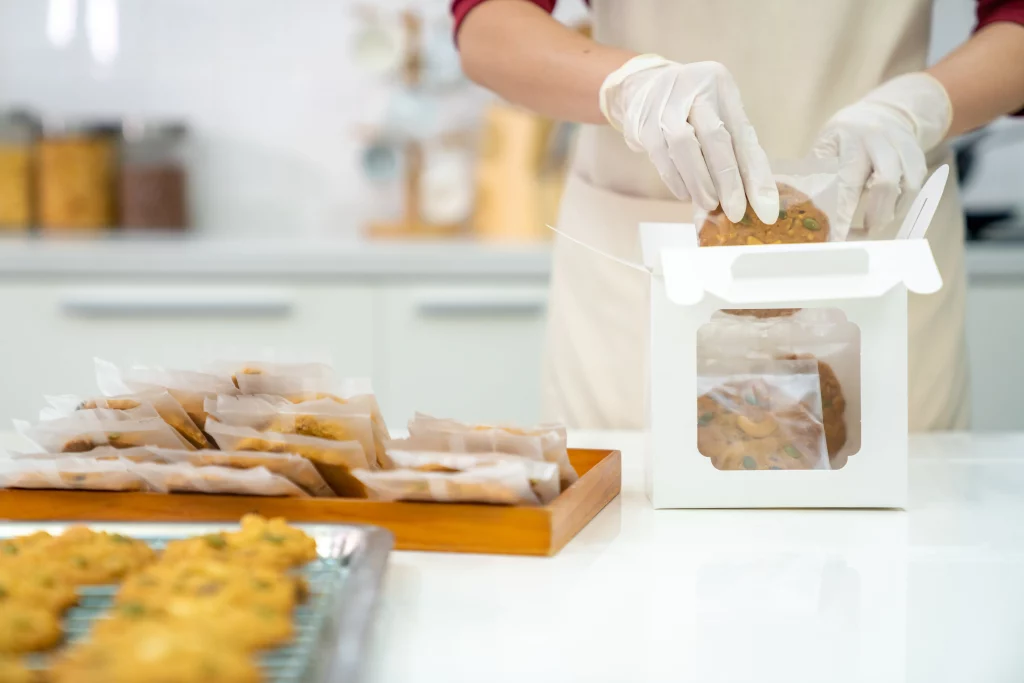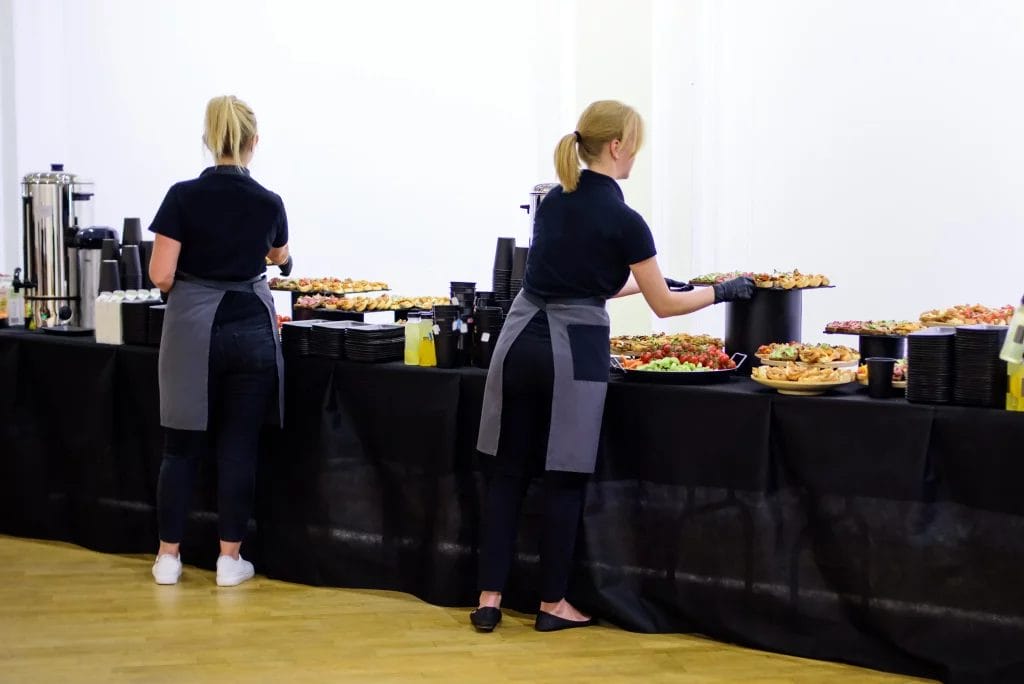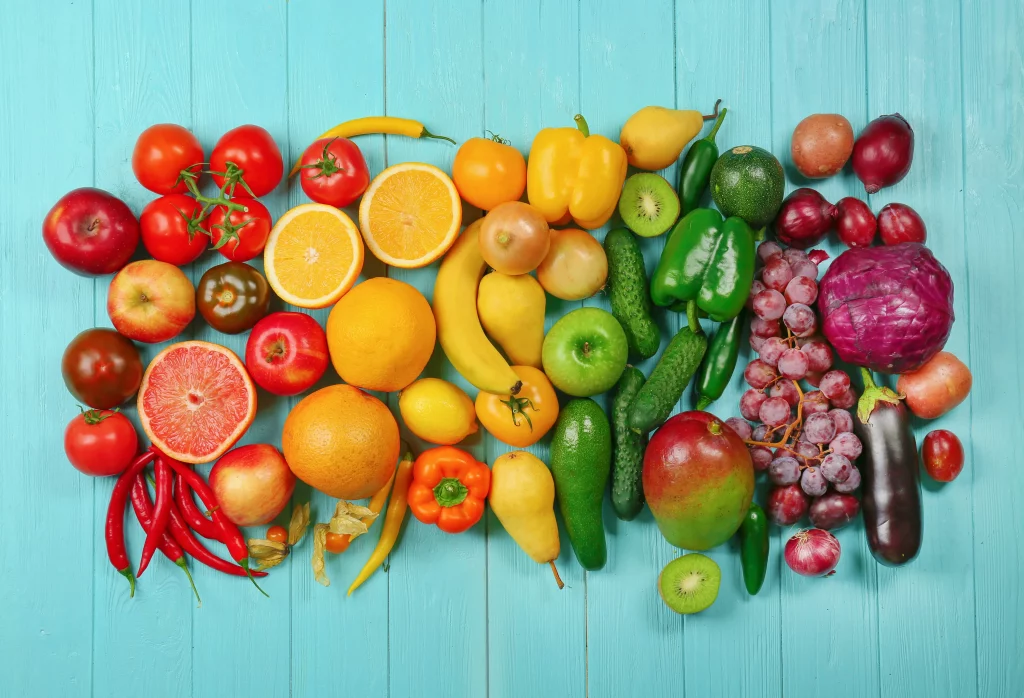Last Updated: August 27, 2024
Over a third of Americans have a side hustle. More and more people are looking for ways to turn their special skills and hobbies into money-making opportunities.
If you love to cook, why not parlay your love of food into a lucrative side gig?
We’ve compiled a list of the best side hustles for chefs and aspiring entrepreneurs, covering several ways to turn your passion into some extra cash, breaking down important factors like commitment, difficulty, salary, and how to get started.
The Benefits a Side Hustle Can Provide
A food side hustle has many benefits if you can dedicate a little time and energy to it:
- Earn extra income
- Develop your skills
- Build a flexible schedule
- Explore a creative outlet
- Diversify your career options
- Turn it into a career
Everybody dreams of earning money while doing something they love. A food-based side gig is an opportunity to do just that! You can expand on your experience while exploring new ideas. And with some hard work and a little luck, your little side business could become your full-time dream job.
The Best Food Side Hustles

1. Start a Meal Prep Service
- Level of Commitment: 5/10
- Level of Difficulty: 6/10
- Level of Liability Risk: 6/10
- Average Pay: $8–$25 per meal
Pros
- Flexibility: You can build your business to suit your life and preferences, like catering to niche dietary needs with vegetarian or gluten-free meals or limiting your client list to 1–2 families to avoid getting overwhelmed with work.
- Predictable: Most meal prep services operate on a subscription basis, so you’ll have a good sense of what to expect each month. This means you have a reliable source of income and a reasonable expectation of workload.
- Low overhead: You probably have all of the kitchen equipment you need to get started, and food costs are included in the prices of meals. This keeps your start-up costs down.
- Reasonable time commitment: With proper planning and some hard work, you can shop, cook, and package your orders within a weekend. This allows you to front-end your efforts to suit your schedule.
Cons
- Hidden expenses: Unless you reassess your pricing strategy regularly, you may lose profits due to fluctuating costs. Food prices rise and fall regularly with seasonality. Plus, if you’re cooking in bulk, you may need to rent a commercial kitchen to get it all done.
- Labor-intensive: While you may only need a few weekends per month to prep orders, those workdays can be grueling. Spending hours on end shopping, chopping, and cooking can be exhausting.
- Logistical challenges: Making the food is one thing, but actually getting it to the customer is another. Whether you arrange pick-ups or deliveries, selling prepared meals requires a lot of coordination and scheduling.
- Regulatory compliance: Laws and regulations vary depending on where you live and operate. You may need to get a license or permit, and some areas require inspections of your home, facilities, and products.
How to Start a Meal Prep Side Hustle
If you plan on operating a home-based food business, there are a few important things to keep in mind. Make sure to research the local market and regulations to stay compliant. You’ll also need to register your business and get cottage food insurance to protect your investment.
As you develop your business plan and start building a client base, answer these important questions:
- Do you cater to specific dietary needs?
- Do you have a specialty? (E.g., gourmet picnic baskets, date night meals, or meals to feed the whole family)
- Will you offer fully prepared meals or portioned ingredients with recipes?
- How will you sell your products? Delivery? Pick-up? Shipping? Farmers markets?
- How many clients can you reasonably serve each month?
Start small with just one or two clients so you can get a sense of cost, time, and demand. As you grow more confident you can take on more customers fairly easily. After all, if you’re already making a big batch of soup, doubling or tripling it doesn’t take much more work.

2. Open a Home Bakery
- Level of Commitment: 6/10
- Level of Difficulty: 6/10
- Level of Liability Risk: 5/10
- Average Pay: $10–$20 per hour
Pros
- Low start-up cost: When working from your home, you don’t need to worry about rent or purchasing professional equipment. Most of your business costs will come from stocking ingredients.
- Creativity: You can explore your artistic endeavors by designing cakes, crafting ornate pastries, and decorating cookies. Plus, as an independent business owner, you’re able to try out new recipes and create custom products.
- Local market: Operating a local business means you can build a loyal client base within your community. You can gain referrals through word of mouth and are more likely to have repeat local customers.
- Control: As the sole proprietor of a home baking business, you have the final say over ingredients, preparation, recipes, and quality control. Many customers appreciate this personal touch.
Cons
- Local regulations: While you may be operating from your home, most cottage food laws require home-based food businesses to meet high standards for compliance and sanitation. You will likely need a license to run your home bakery.
- Limited capacity: You’re only one person and you can only fill so many orders on your own. Moreover, quality baked goods take time, and the limitations of non-commercial equipment can put a damper on your production speed.
- Unreliable income: Demand for baked treats can ebb and flow throughout the year, so business won’t always be consistent. You’ll likely see higher demand during the winter holidays, but orders may slow down in the summer months.
- Work-life balance: Baking takes time and space, requiring long hours and ample room to cool and decorate your products. This can be disruptive to your schedule and household.
How to Start a Baking Side Hustle
Starting a baking business from home requires a few important steps, including getting the necessary permits and registering with your state.
Once you complete the business-critical steps, you can get to baking. Start small with custom orders for special occasions like birthdays and baby showers. As you get more comfortable, take on larger events like weddings or anniversary parties.
Connect with local markets and cafes to see if the owners would be willing to sell your cookies or bread in their shops. This is an excellent way to reach new customers who may go on to order directly through you.
Extend your reach even further by showcasing your products at local farmers markets and festivals.

3. Cater Events, Weddings, and More
- Level of Commitment: 8/10
- Level of Difficulty: 8/10
- Level of Liability Risk: 8/10
- Average Pay: $15.25 per hour
Pros
- High demand: Where there are events, there are caterers. Hosts need catering for a wide variety of gatherings, including weddings, corporate events, funerals, and parties. Hiring a caterer is often easier and more cost-effective for party planners.
- Profit potential: Large events can generate a significant payoff, particularly if you feature high-end options on your menu. You can also upsell clients with desirable add-ons like hors d’oeuvres and desserts.
- Networking: Working in the event industry allows you to build relationships with other professionals, which can lead to more business opportunities in the future.
- Flexibility: You have the ability to accept the jobs that fit your schedule. You can choose to stick with small, intimate dinners, or expand to large-scale events depending on your preferences and skill level.
Cons
- High investment: Commercial-grade gear is a must if you want to be a caterer, which means a large upfront investment before you can start. In addition to hardware, you may also need to hire a few people to help out, which cuts into your profits.
- Inconsistency: While demand can be great, there are often dry seasons for caterers. This will result in unreliable cash flow and difficulty finding jobs during the slower months.
- High pressure: Clients expect optimal service and high-quality food when they hire a caterer. This means preparing outstanding food on a tight timeline and doing it all with a smile.
- Physically demanding: As a caterer, cooking the food is only the beginning. Beyond the many hours in the kitchen, you’ll be standing for long periods, hauling around heavy dishes of food, and deep-cleaning after you’re done.
How to Start a Catering Side Hustle
Ready to start your catering business? Like most food side hustles, it’s best to start small and gain experience. In other words, don’t try to tackle a wedding with 300+ guests for your first event. Instead, try to book a few intimate dinner parties or small bridal showers.
Starting small reduces your initial investment by removing the need for commercial equipment or hiring employees right off the bat. One of the greatest benefits of catering as a side hustle is that you can grow as you go, expanding when and if you’re ready.

4. Go Mobile With a Food Truck
- Level of Commitment: 9/10
- Level of Difficulty: 9/10
- Level of Liability Risk: 9/10
- Average Pay: $24,000–$150,000 per year
Pros
- Lower-risk endeavor: Operating a food truck presents a much lower risk and cost than opening a brick-and-mortar restaurant. You can still pursue your dream of sharing your food with the world without the pressure of the traditional restaurant industry.
- Mobility and flexibility: Monotony won’t be a problem when you run a food truck. You can travel, participate in various events, and set up shop all over town.
- High demand: From food festivals to private parties, food trucks have become a staple in the culinary landscape.
- Customer interaction: As a food truck owner, you get to meet and serve new people every time you open for business. From repeat customers to foodies trying your fare for the first time, you can interact with a wide range of awesome people!
Cons
- Regulations: Though laws vary by state, food trucks are always required to follow strict food safety guidelines. You also need permits and licenses to operate wherever you go.
- High upfront costs: Getting a food truck business off the ground is expensive. The truck itself is costly, plus you need to cover equipment, supplies, food, permits, and upkeep.
- Unpredictable income: Food truck businesses are at the mercy of the seasons and weather conditions. It can also be a challenge to find places to park and open. Even when you participate in events, there’s no guarantee that you’ll have good sales.
- Labor-intensive: Operating a food truck involves long, busy days on your feet. Many vendors work solo, cooking, cleaning, and waiting on customers for 12-hour shifts.
How to Start a Food Truck Side Hustle
If you aspire to start your own food business, a food truck side hustle is a great way to break into the industry. It’s important to understand that starting a mobile food business involves many of the same steps as a traditional restaurant, including developing a business plan and completing all of the compliance requirements.
Not ready to commit to a food truck? Start with a food trailer or cart instead. These options are more affordable and allow you to get some experience before diving in. You can scale your business if and when you’re ready, moving on to a food truck or eventually a physical location if that’s your ultimate goal.
Once you have what you need to get started, sign up to participate in community events and small festivals to get a sense of how to operate your business and what processes work best for you.

5. Teach Cooking Classes
- Level of Commitment: 7/10
- Level of Difficulty: 6/10
- Level of Liability Risk: 4/10
- Average Pay: $25–$100 per student
Pros
- Personal satisfaction: The psychic reward of teaching is a valuable and often unsung benefit. Feeling as though you’ve made a positive impact on others is a driving force for most educators.
- Share your passion: One of the very best things about teaching is getting to share something you love with other people. Passing down your knowledge means more people can enjoy excellent food!
- Flexible schedule: As the teacher, you get to choose your class schedule. If you only have one Saturday a month to dedicate to your side gig, that’s fine!
- Extra income: Most cooking teachers charge by the student. Depending on class size and how many workshops you run, you can earn a few hundred dollars for a single day of work.
Cons
- Higher initial investment: To run a cooking class, you’ll need enough supplies and ingredients for everybody in the session. This means purchasing more equipment or renting a commercial kitchen. Both options can be pricey.
- Prep time: The invisible work behind teaching takes far longer than the actual class meeting. You need to plan a lesson, choose recipes, shop ingredients, and prepare a demonstration.
- Variable income: Your earnings from teaching cooking classes depend on several factors, including the cost of groceries, enrollment size, and frequency of lessons. It can be difficult to predict.
- Classroom management: Managing a class full of people is not for the faint of heart. So many personalities, experience levels, and questions can be overwhelming, not to mention needing to keep everyone engaged and interested.
How to Start a Cooking Class Side Hustle
One of the best ways to explore this cooking side hustle is to offer demonstrations and small classes from your home. This allows you to keep head counts low and costs down while you practice and gain experience.
If you prefer not to use your home, rent a commercial kitchen space or an event hall with a roomy kitchen so you have the space and equipment you need to teach. While these options require a rental fee, it may be more cost effective than purchasing everything up front.
Teaching online is another great option for food educators. You can host and record from the comfort of your kitchen and students can practice in theirs. Host live events on a video call, or pre-record and sell your cooking videos through services like Udemy or Teachable for some passive income.

6. Become a Personal Chef
- Level of Commitment: 9/10
- Level of Difficulty: 8/10
- Level of Liability Risk: 6/10
- Average Pay: $33 per hour
Pros
- High earning potential: Because personal chefs are considered a luxury, clients will pay a higher price point for the service.
- Creative freedom: Catering to specific customer preferences allows you to explore new flavor profiles, recipes, and cuisines.
- Personalized client relationships: The ability to work closely with clients and build strong relationships can create a higher level of job satisfaction and customer loyalty.
- Independence: You can be your own boss, operating your business how you want and managing your personal and professional growth however you choose.
Cons
- Startup costs: You need a traveling set of high-quality kitchen equipment to use in your clients’ homes. In addition to this, you’ll need reliable transportation and any necessary licenses and certifications, which can be costly.
- Travel requirements: Home chefs go to their clients, so you’ll spend lots of time driving and shuffling your equipment around. You’ll need to factor in the cost of gas and maintenance.
- Administrative duties: The downside of being your own boss is business management, like bookkeeping, scheduling, and billing. You also need to manage health and safety requirements to stay compliant.
- Client expectations: When you offer a premium service, customers expect premium quality. As a personal chef, you may face very specific preferences and demands, requiring you to be flexible and attentive to detail.
How to Start a Personal Chef Side Hustle
Finding and retaining clients is the first hurdle you need to overcome when starting out as a personal chef. Search on sites like Indeed or iHireChefs to identify opportunities in your area. Once you break into the industry, you can likely find more jobs through word of mouth and customer referrals.
A personal chef side hustle is a great way for caterers and professional chefs to supplement their income on days off. Those already working in the food industry probably have many of the supplies and recipes, mitigating the cost and planning time.
Because it can be time consuming, it’s best to stick with one or two clients unless you’re prepared to commit full-time.

Tips for Starting Your Food Side Hustle
No matter which food side hustle you decide to pursue, you can improve your chances of success with these eight tips:
- Identify your niche and really explore it. Customers respond to unique ideas!
- Create a business plan so you know where to start and where you’re going
- Promote your business on social media for high-visibility, low-cost marketing.
- Start small! Your food side hustle should be rewarding, not overwhelming.
- Keep customers coming back with amazing customer service.
- Network with other businesses and community members to identify opportunities.
- From home cooks to food trucks, every food business needs liability insurance to cover accidents that may come up along the way.
- Don’t be afraid to accept good advice on how to succeed and grow in the industry.
Time to Get Out There and Hustle
If you’ve always dreamed of pursuing a job in the food industry, now is the time to shoot your shot! Food side hustles are a great way to take your hobby and turn it into a new venture. With the possibility of making money while doing something you love, what do you have to lose?
By Lyndsey Larsen
Lyndsey Larsen, a former Marketing Manager for FLIP, is an experienced writer with a background in corporate communications and nonprofits, SAAS corporations, and nutraceutical companies. She previously worked as a journalist for regional and national publications.

